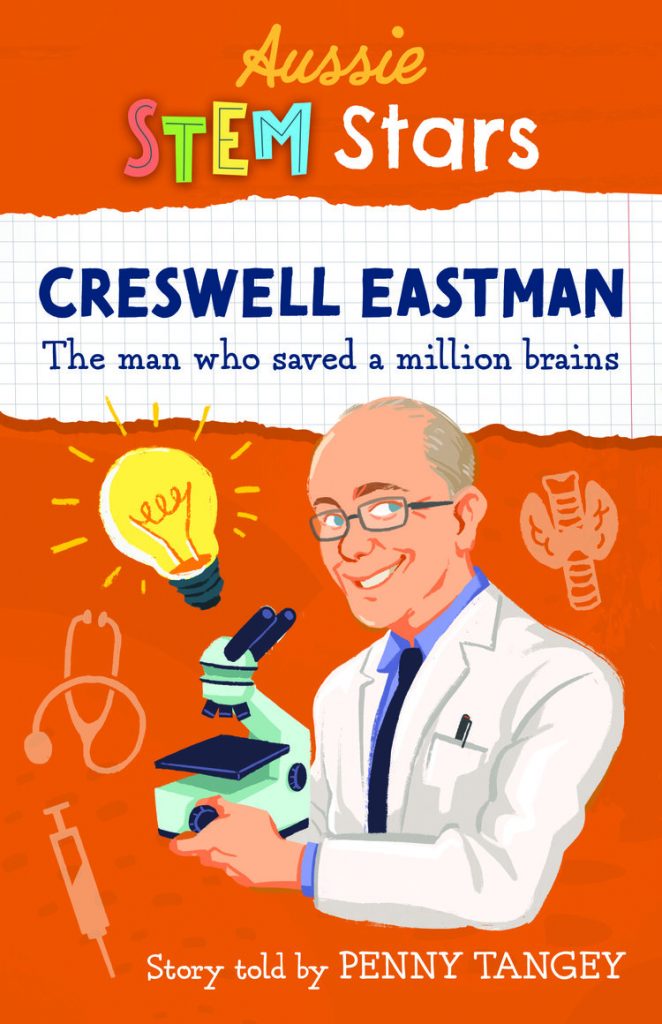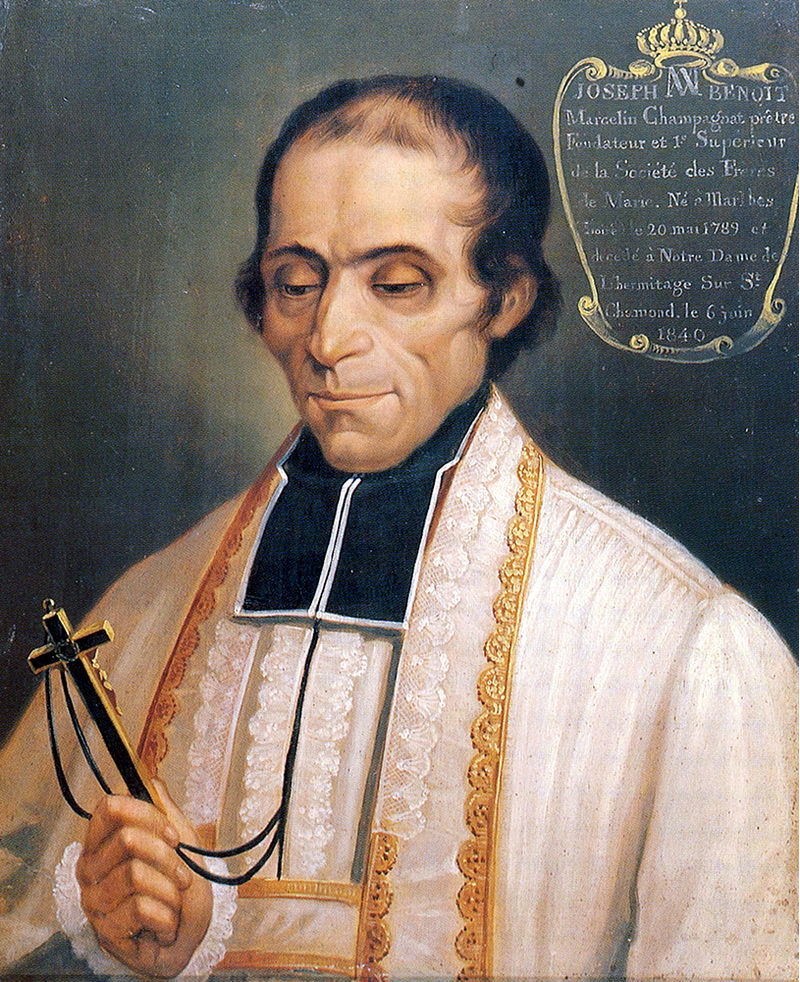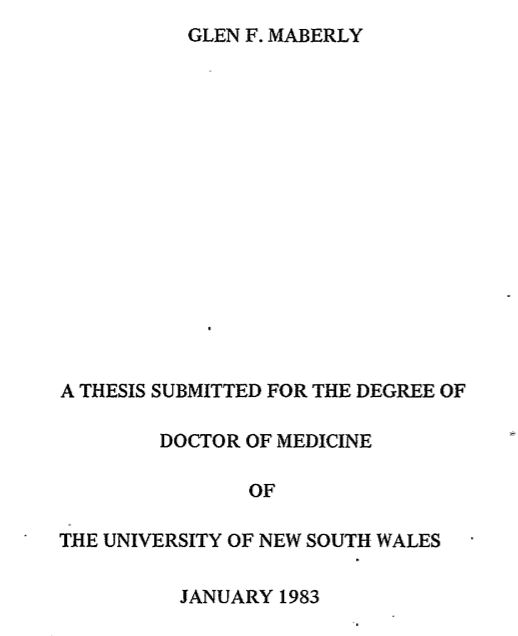Non-fiction and the legends who helped me write it

My first non-fiction book, ‘Creswell Eastman: The Man who Saved a Million Brains‘ was published recently by Wild Dingo Press. It’s about the life of endocrinologist Creswell Eastman. As part of the Aussie STEM Star series the book focuses on his years growing up, as well as his scientific career.
In theory I was well-qualified to write the book. I’m a middle-grade author and my other job involves verifying TV quiz show questions. I should have research and story-telling covered. In fact, I found it hard bringing those two things together on this project.
TV quiz shows are strict about ensuring there is one and only one verfiably correct answer. It’s surprising how often seemingly clear questions can have problems. More than once, towards the end of a hard day of question verifying, I’ve dramatically flopped over the desk declaring ‘Nothing is true!’
The opposite happens when writing a novel. Anything can be true. The characters’ world is generated by the writer and they can decide how closely this resembles reality. There’s a lot of freedom in this, but a lot of ideas need to be generated as well.
My book on Creswell Eastman was based on interviews and written answers to my questions. He was very generous with his time and information but inevitably, to write in the Aussie STEM Star style I needed use some creativity and inference. This was hard at first. I had to balance my quiz show researcher desire to use only verifiable facts with my creative imagination.
I supplemented interviews with Creswell with my own research. Here are some of the sources* I found and how these helped me create a story using only(ish) the truth.
*There were also many other sources i used, most notably of all, Kate Riedl’s excellent documentary ‘The Man Who Saved a Million Brains‘ and Richard Fidler’s Conversations interview.
Soldier’s letters in Trove

During World War I soldier’s letters home were published in the newspapers. These have been digitized by absolute heroes and made available through the National Library of Australia’s online repository Trove, which I love and started a podcast about.
Creswell’s father, Albert Eastman, was in the the 8th Lighthorse Regiment and two of his letters were published in the Maryborough and Dunolly Advertiser. These were written after he was shot in the Battle of the Nek at Gallipoli in 1915 (that’s the final battle in the Mel Gibson film). Even after this terrible experience Albert was determined to go back to the firing line. He wrote ‘I am ready to try my luck again’ and later ‘I have been in it since the start and will see it through, even if I have to suffer the consequences.’
In his letter published in January 1916 Albert wrote ‘Send along some of those cold-footed Maryborough boys. Not half have come as should have.’ Albert also said he’d seen fellow Maryborough local Cyril Hodkinson but Cyril hadn’t been to the front yet. This caused the paper to issue a correction two days later. Cyril’s family clarified that Cyril most certainly had been to the front, and actually before Albert Eastman. So there.
These letters gave me a tiny glimpse into the character of Creswell’s dad and what he went through. I tried to incorporate some of the words and phrases from the letters in the book. For example, Albert refers to not wanting to be ‘cold-footed’ when talking about the war with Creswell.
‘Soldier’s Letters’, Maryborough and Dunolly Advertiser 5 January 1916
‘Soldier’s Letters’, Maryborough and Dunolly Advertiser, 7 January 1916
‘Private A. E. Eastman’, Maryborough and Dunolly Advertiser 16 June 1916
Catholic recruitment literature analysis

For high school Creswell attended a Marist Brothers boarding school with a view to his becoming a Marist brother himself when he finished school. Catholicism was particularly important to Creswell’s mother and she thought having a child enter religious orders would be a great honour. Creswell decided not take this path and went to university instead, but it was difficult to break with these expectations.
I found a paper by Chapman and O’Donoghue analyzing recruitment literature used by Catholic religious orders in Australia in the 1930s-60s. This sounds like an incredibly specific topic, however, the paper discusses the broader historical context of Catholicism. Catholic schools were a way for the church to maintain and expand its spiritual power. This required large numbers of people in religious orders to operate these institutions and teach. Recruiting more people to become priests, nuns and brothers was very important and they started when children were very young.
I was also brought up Catholic, and attended a Catholic primary school. I even wanted to be a nun for a brief period (in between wanting to be a police rescue worker and stage actress). However, when I was growing up children were no longer being actively recruited to religious orders. My parents didn’t tell me I shouldn’t be a nun, but they also didn’t encourage me and neither did my teachers.
Chapman and O’Donoghue’s paper made me realise how direct the recruitment efforts were in the past. At Sunday Mass parents were told they had a duty to encourage their kids to enter religious orders. Recruitment officers attended schools and told young boys what a great life they could have as a priest or brother. Marist brothers were instructed to directly approach boys and encourage them to start a pathway to religious life.
This paper helped me understand the social and family pressure Creswell was under when he was sent to the Marist boarding school. I tried to show this in a scene where Cres’s mother and principal convince him to go to boarding school.
Glen Maberly’s thesis

Creswell first got involved in international fieldwork when he supervised Glen Maberly’s research projects on goiters in Sarawak. As part of this research Creswell travelled to remote Malaysian communities via riverboat and stayed in a traditional longhouse.
I’ve never travelled to a remote village like that, and I was concerned about describing it well. Then, I found Glen Maberly’s 1983 thesis online. When I started to read it I actually shouted, ‘Glen, you legend!’ He had included detailed descriptions of the places they visited AND photos. As a contemporary account of a visitor’s impressions of Sarawak it was extremely helpful. It gave me not just descriptions of how the longhouse looked, but the sounds as well; children running on the bamboo floor, pigs grunting under the longhouse and the transistor radio playing Coca-Cola ads.
Thank you
I appreciate the effort people put into researching, documenting and curating information so it can be found and used. Lots of things I read didn’t end up in the book at all but I don’t mind. I enjoyed going down rabbit holes, chasing details and shaping them into a story.
I first bumped up against Professor Cres Eastman in 1993. He was addressing a group of people diagnosed with Addison’s disease in a Blue Mountains garden. At that stage I just thought of him as an expert endocrinologist who was excellent at helping us Australians new to Addison’s come to grips with a lifelong condition.
At the next event where we were both present I got to encounter the great humanity of the man – and his humility. He mentioned how he got to be an “expert” in Addison’s disease – rare as it is. On a grand rounds with his endocrinology tutors the trick question came up of “what is the diagnosis of this patient.” “Addison’s disease,” was the young Cres’s quick reply. He told us it was a wild guess, but I think I know of instances where he shows a remarkable intuition into conditions.
Professor Eastman was key in moving the community of patients living with Addison’s disease into forming a Sydney Chapter of the fledgling Australian Addison’s Disease Association (booking meeting rooms for them and often sitting in with meetings). Hence it was delight that my next encounter with him was on the 25th anniversary of that Blue Mountains talk in the garden when he gave a Seminar talk to patients both in person and online showing the link between autoimmune diseases, including Addison’s disease, thyroid conditions and Diabetes Type 1. It was afterwards when he spoke most generously with some young people – and his old patients that I really appreciated his gifts.
I also began to appreciate his remarkable talent for self-diagnosis. He had just recovered from an illness where he had to order treatment that clearly worked but his treating team probably were hesitant to give.
Later I heard an interview where he described how close he was to dying in Nepal on one of the journeys to save a million brains. Again – not only diagnosis of the condition but the quick action to treat it.
I am pleased you have captured the spirit of this remarkable Australian and his remarkable family.
He is always so kind to both my wife (now president of that Addison’s Association) and I whenever we come across each other.
Thanks so much for sharing this. I found Cres to him to be very generous with his time and information as your experiences with him clearly show as well.